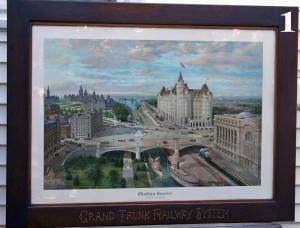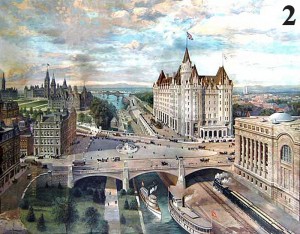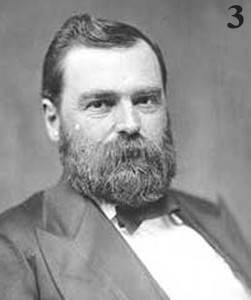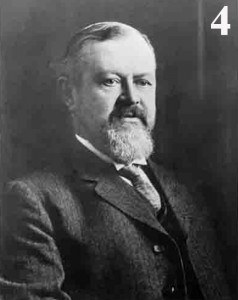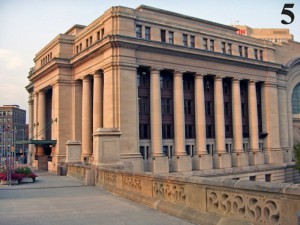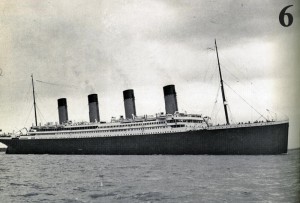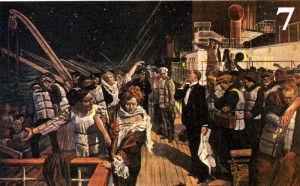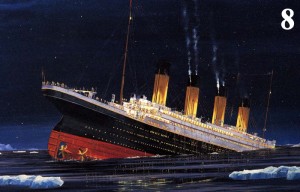Part 1 of 4: Important New Acquisition for the Toronto Railway Museum
Among the artifacts on display at the Roundhouse are several vintage framed prints prepared for railway promotional purposes. These prints usually hung in passenger stations and downtown ticket offices and were used to advertise specific trains, scenic highlights along the line, and other company owned assets such as hotels. The Toronto Railway Historical Association recently had an opportunity to acquire one of the rarest of these prints, prepared in 1911 for the Grand Trunk Railway to promote the opening of its new Ottawa Central Station and Chateau Laurier Hotel. (IMAGE #1) It is one of the most stunning examples of non-abstract commercial art ever produced by a Canadian railway. (IMAGE #2)
The Ottawa improvements were a pet project of Grand Trunk executive Charles Melville Hays (IMAGE #4), who wanted the railway to have an impressive footprint in the Nation’s Capital. The Canadian Pacific Railway had already opened a chain of luxury hotels across Canada. When Hays took over the Grand Trunk as general manager in 1896, the railway operated an 800-mile main line that extended from Portland, Maine through Quebec, Ontario and Michigan to Chicago, Illinois. Under Hays’ leadership the Grand Trunk Pacific would extend all the way to the British Columbia west coast. The Château Laurier was named after Hays’ primary political patron, Sir Wilfrid Laurier, Canada’s seventh Prime Minister (1896-1911), who helped secure the site where the hotel would be built.
The initial plans for Central Station and the Château Laurier were created by New York’s Bradford Lee Gilbert, who had designed the 1893 Illinois Central Station in Chicago, which had clearly influenced the design of the new Toronto Union Station headhouse on Front Street, finished in 1896. After Gilbert had a falling out with the Grand Trunk, the Montreal architectural firm Ross and MacFarlane completed the Ottawa projects. (IMAGE #5) This firm would also be involved with early designs for the current Toronto Union Station. But the successor firm of Ross & Macdonald would actually design that new station, as well as the Royal York Hotel across the street.
In March of 1912, Charles M. Hays, by this time president of the Grand Trunk, sailed to Europe with his wife and daughter, probably to secure additional financing for the railway’s Pacific extension. Hays was also in discussion with the White Star Line to carry immigrants across the Atlantic to Canada, whereupon the Intercolonial/Grand Trunk would transport them to their final destination. On April 10, 1912 Hays returned to Canada aboard White Star’s RMS Titanic (IMAGE #6) in order to attend the planned May opening of the Château Laurier and Central Station. Five days later the Titanic sank 400 miles off the coast of Newfoundland and Hays perished along with over 1,500 others. (IMAGES #7 & 8)


